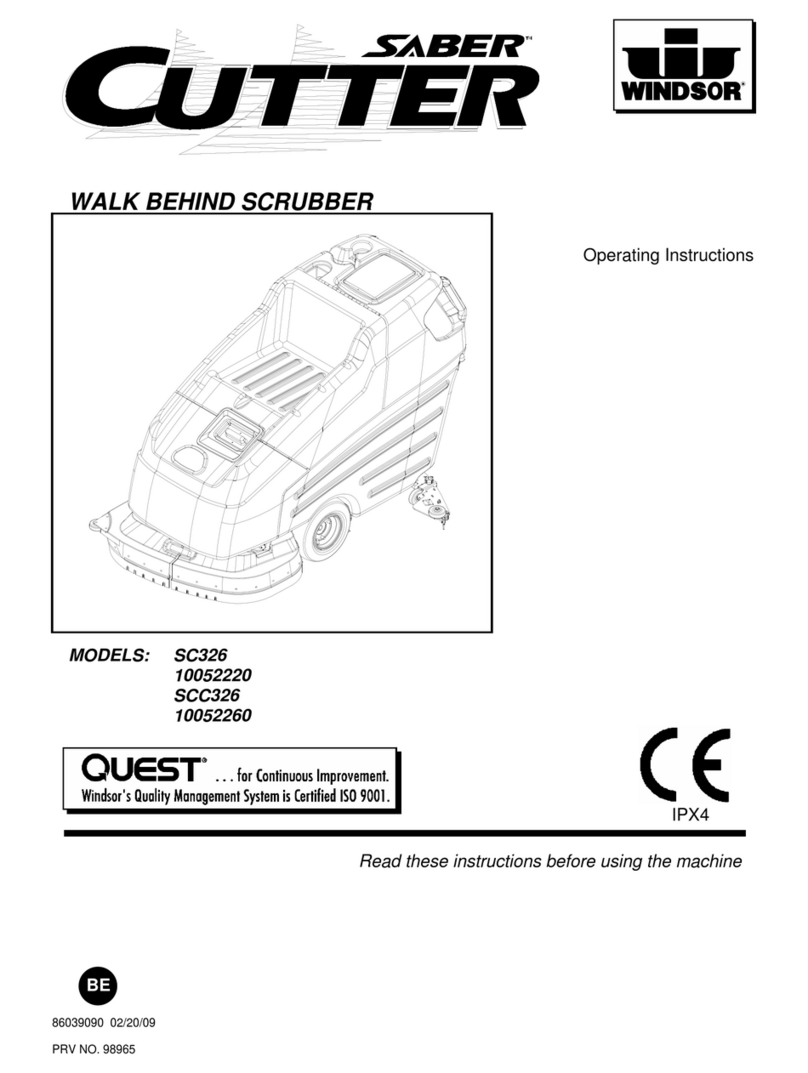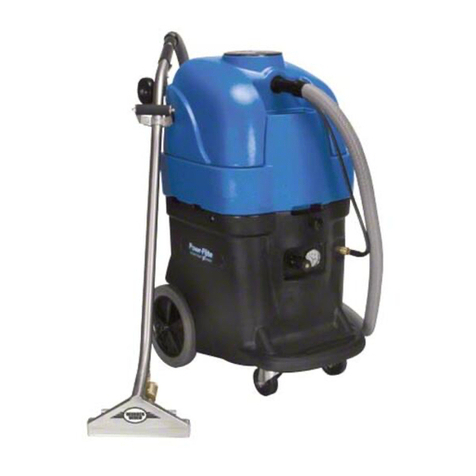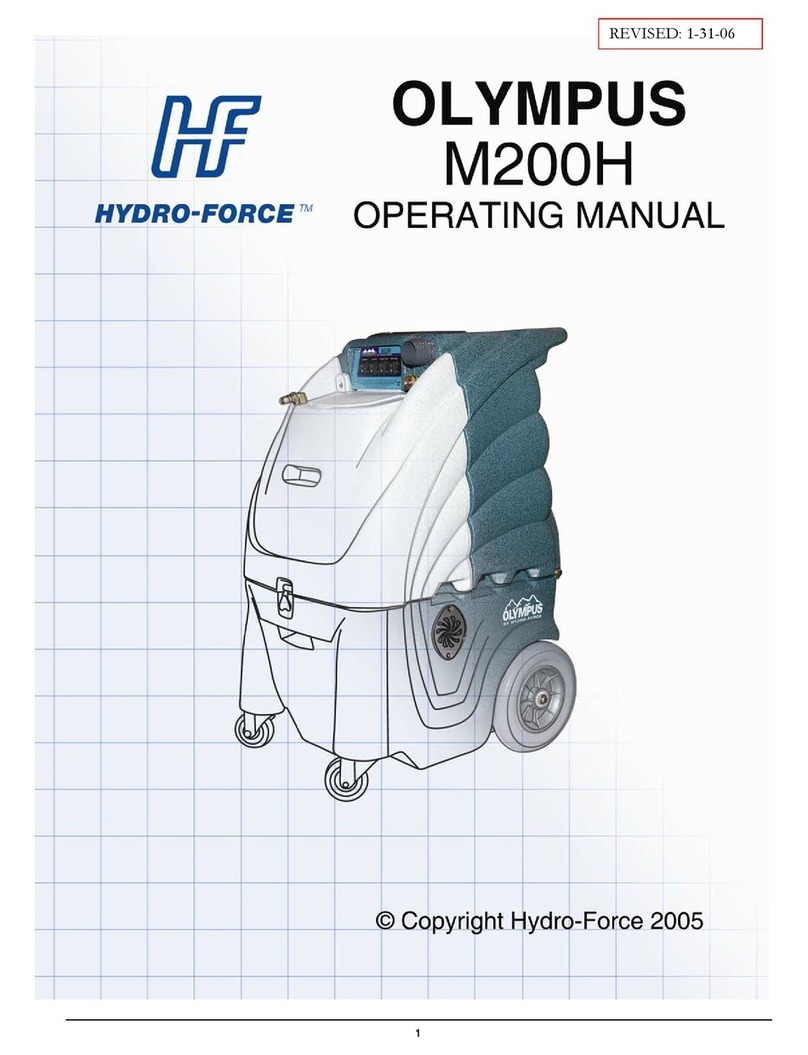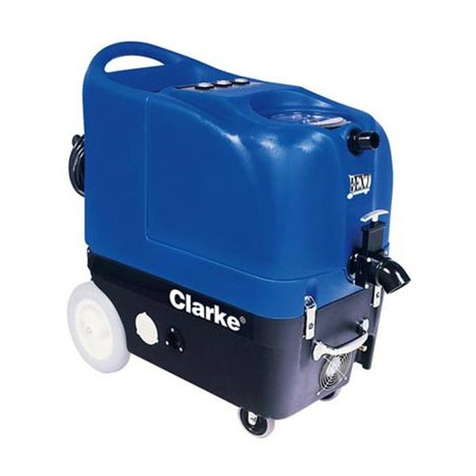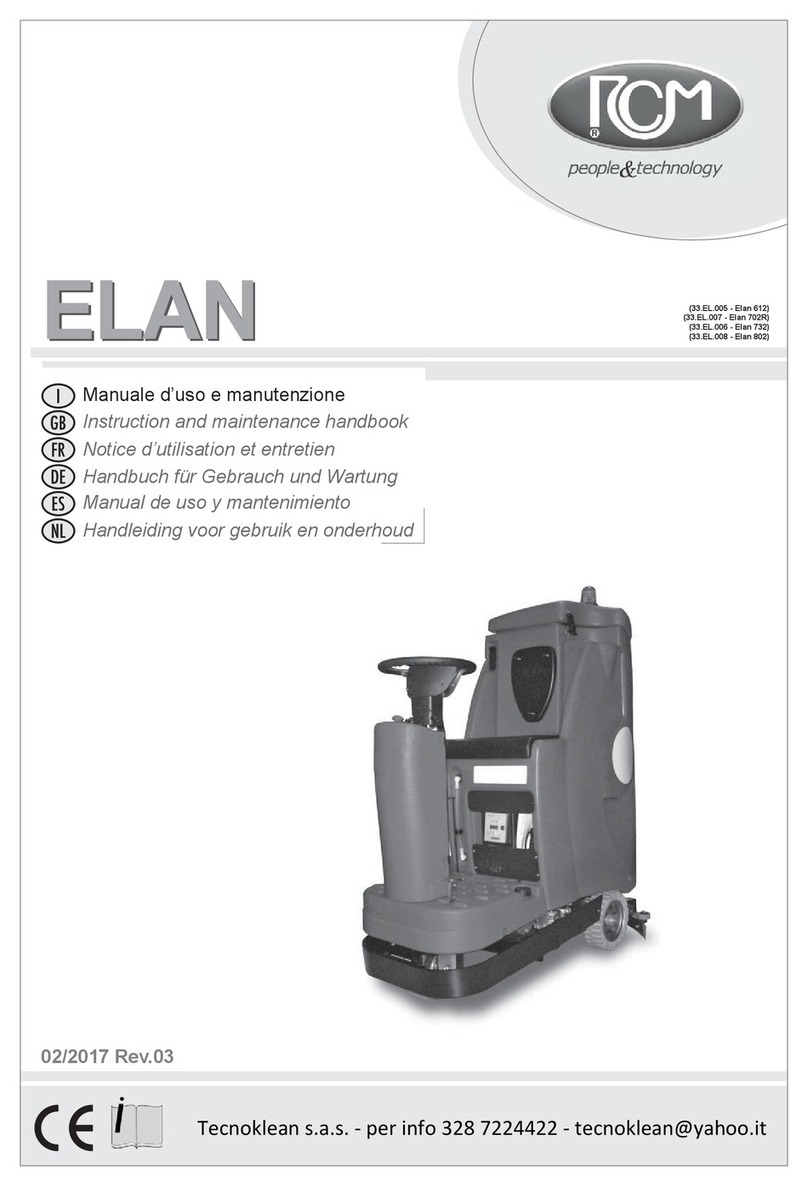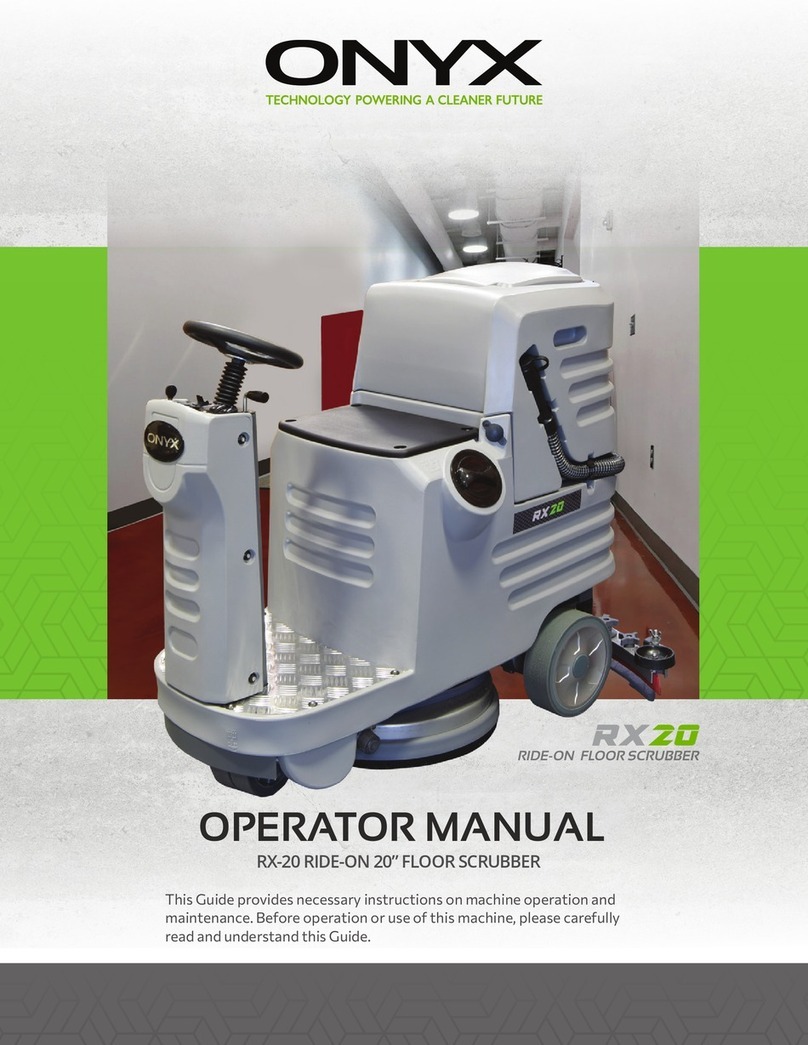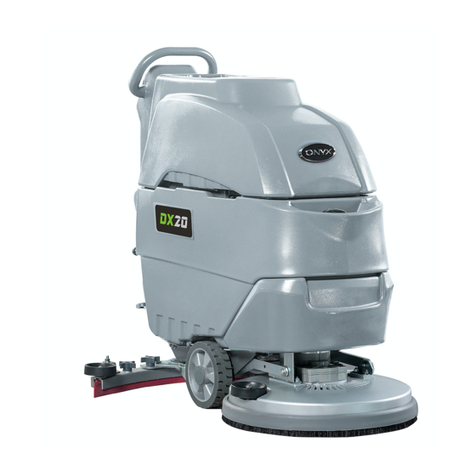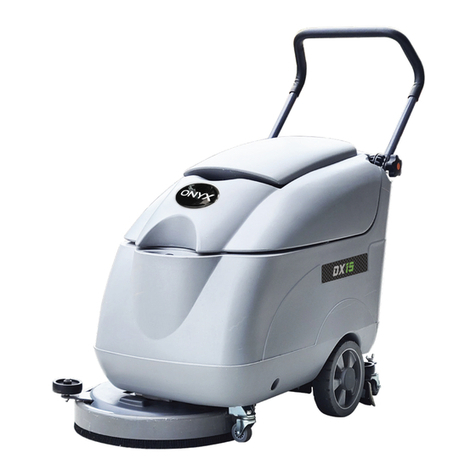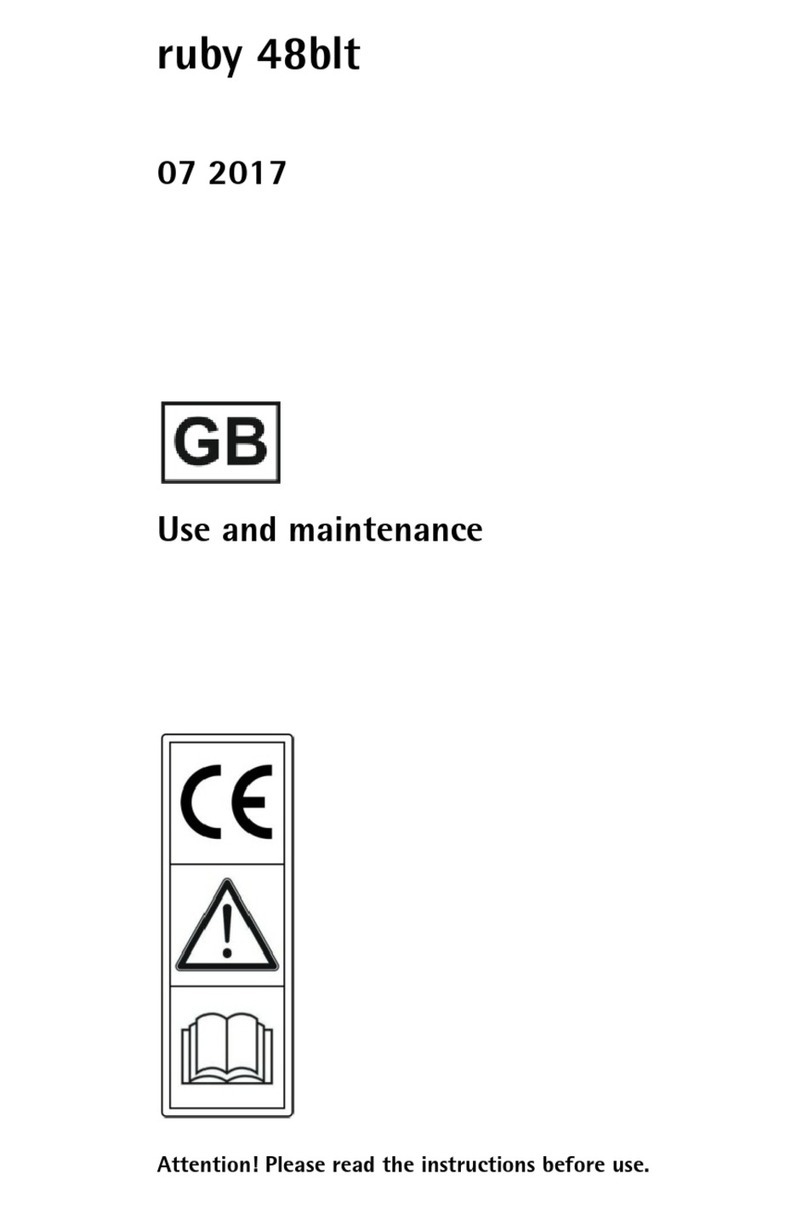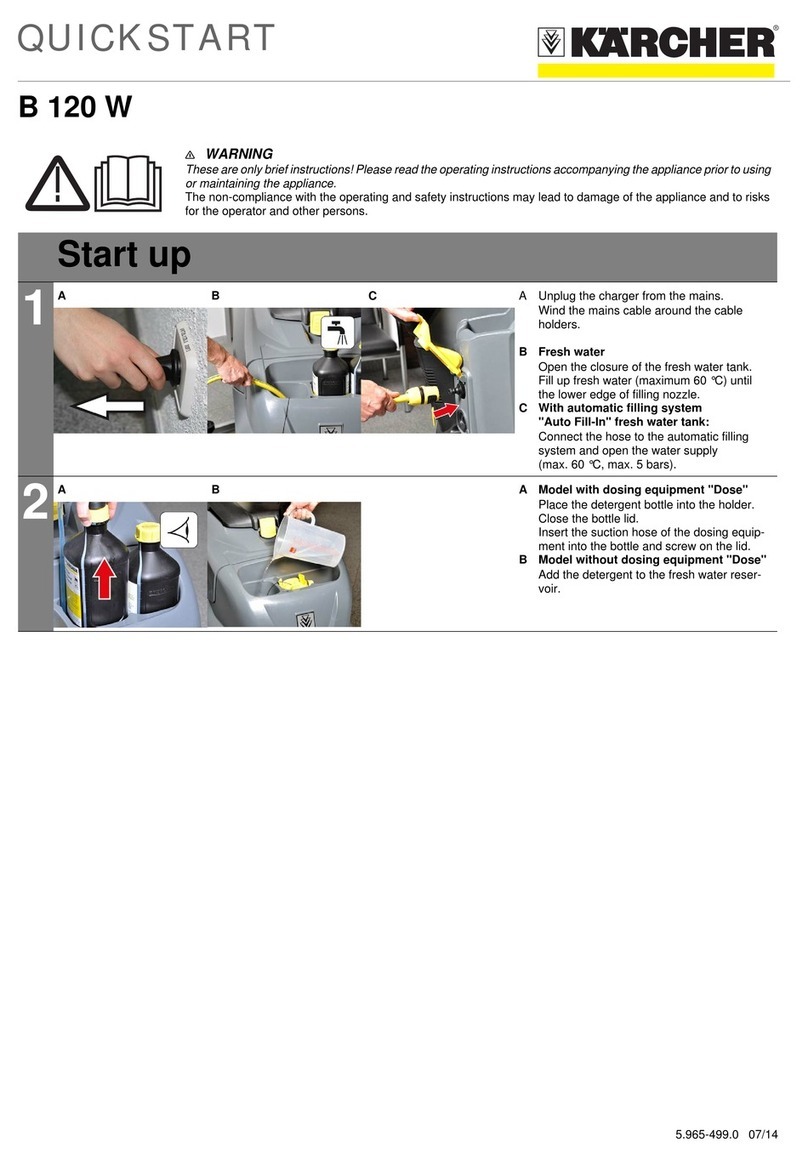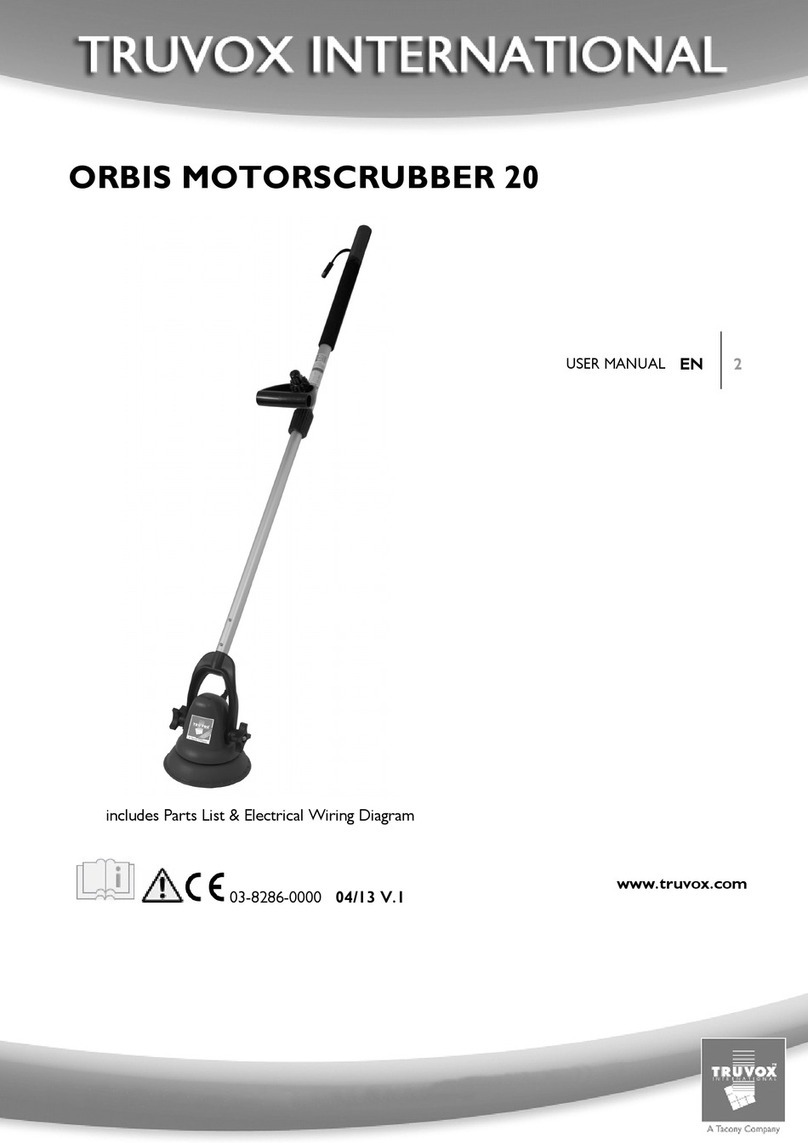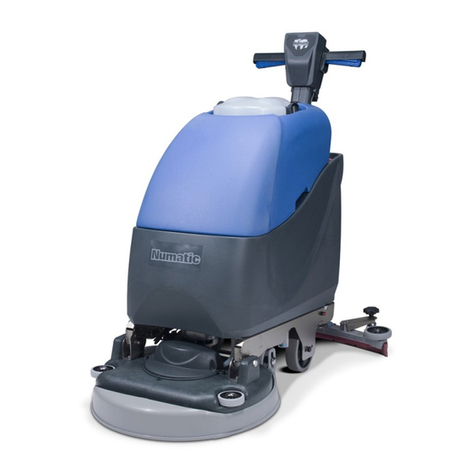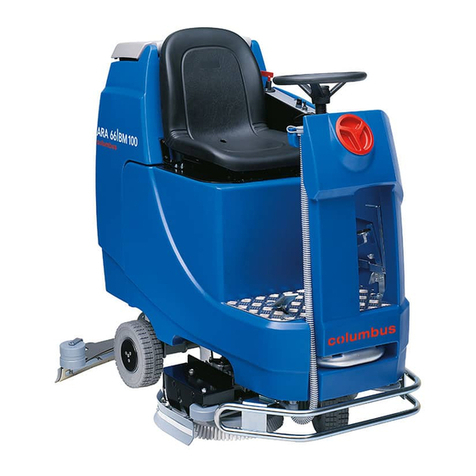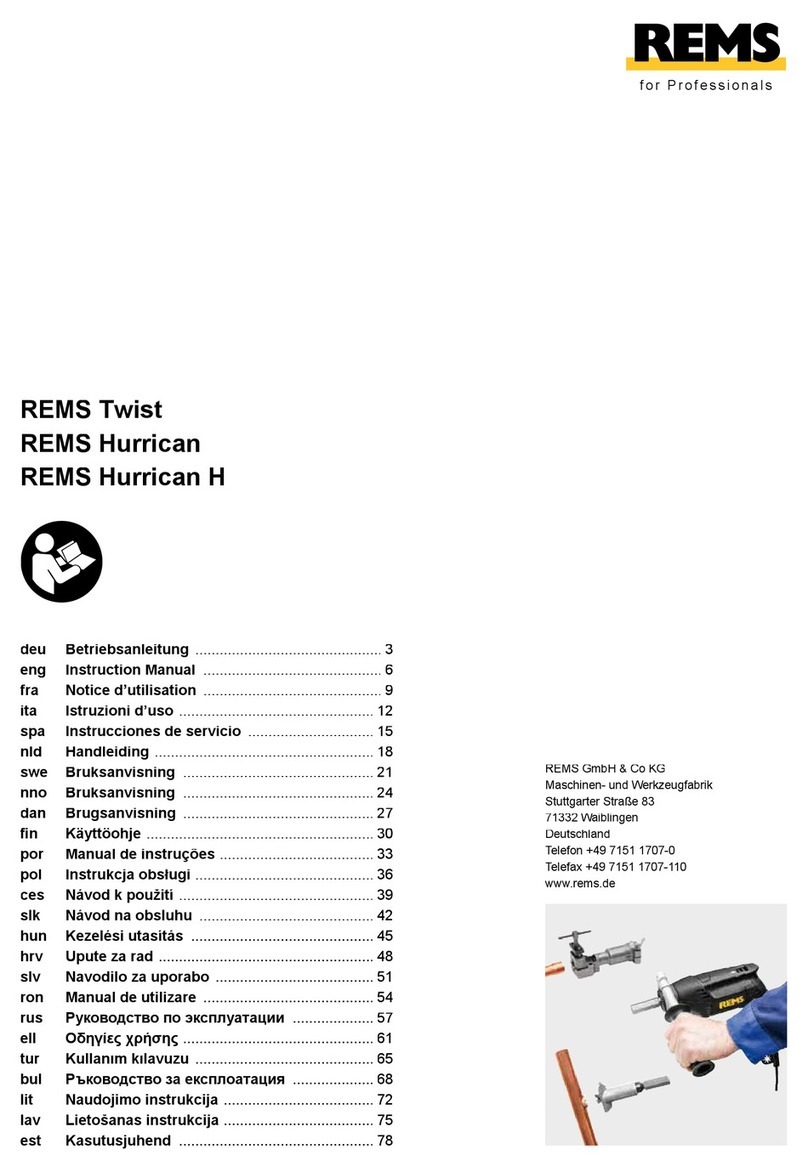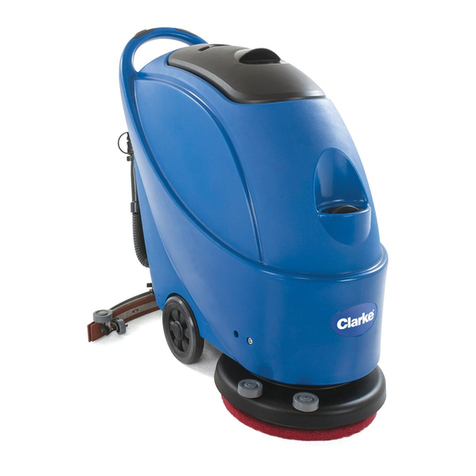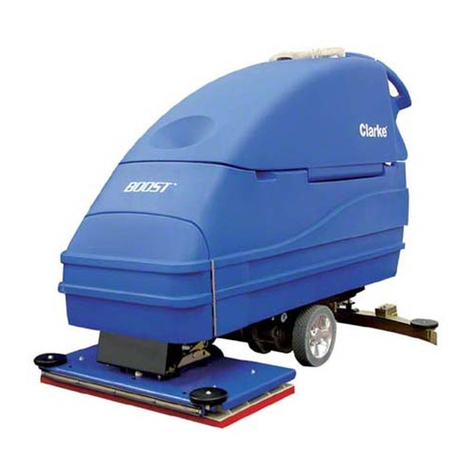
6 7
DESCRIPTION OF SAFETY SYMBOLS
The following safety symbols are used on the product and in this manual to alert the operator of
potential safety hazards. Read them carefully, and understand their meaning.
Indicates DANGER, WARNING, or CAUTION
Read Operator Manual before operating his machine. Failure to follow directions could
result in death or serious injury.
Engine exhaust contains carbon monoxide, an odorless and deadly gas. Follow all Carbon
Monoxide Safety instructions in this Operator Manual, Propane Engine Supplemental
Operator Manual, and on machine. Failure to follow directions could result in death or
serious injury.
Do NOT touch hot muer, exhaust pipe, or cylinder. These parts are extremely hot
from operation and may remain hot after operation. Severe burn or injury could
occur if you touch these parts.
Propane is highly ammable. Follow all Propane Safety instructions in this Operator
Manual, Propane Engine Supplemental Operator Manual, and on machine. Failure to
follow directions could result in death or serious injury.
Wear eye and hearing protection when operating this machine.
There are rotating pads and parts under machine frame, which can cause serious
injury. Keep hands and feet away.
GENERAL OPERATION SAFETY
DANGER: Severe burn or injury could occur if you touch the hot muer, exhaust pipe, or
cylinder. Do NOT Touch these hot parts.
WARNING: Any alterations or modications of this engine could result in damage to
the engine or injury to the operator or other bystanders. Alterations or modications
not authorized by the manufacturer voids any and all warranties and liabilities.
WARNING: To avoid injury or property damage, DO NOT leave the machine where it can be
tampered with or started by persons untrained in its operation.
WARNING: Moving parts of this machine can cause serious injury and/or damage. Do not
allow contact of clothing, hair, hands, feet, or other body parts with the rotating pad. Keep
other people away from the machine while it’s in operation. DO NOT leave the machine or
engine running unattended.
WARNING: Operate the machine at a slow or moderate pace. DO NOT run when operating
the machine.
WARNING: Injury to the eyes and/or body can occur if protective clothing and/or equipment
is not worn while using this engine. Always wear safety goggles and safety clothing while using
this machine.
WARNING: Long or continuous exposure to high noise levels may cause permanent hearing
loss. Always wear hearing protection while using this machine.
WARNING: Injury to the operator or bystanders could occur if the machine’s power is on while
changing the bung pad or making machine adjustments. Never try to change the bung pad
or attempt to make machine adjustments while the engine is running.
WARNING: Keep bystanders away from the engine while it is in operation.
WARNING: Substantial damage to the oor, the machine, or personnel may result if the
machine is operated with the pad o center, damaged or missing. Do not operate the
machine if the pad is o center, damaged or missing.
WARNING: Operating an engine that has loose parts could result in injury or property
damage. DO NOT operate this engine if there are loose parts. Inspect the engine for loose
parts frequently. This will promote safe operation and a long engine life.
WARNING: Vibration from machinery may cause numbness or tingling of the ngers in
certain people. Smoking, dampness, diet, and heredity may contribute to the symptoms.
Wearing warm clothing, gloves, exercising and refraining from smoking can reduce the
eects of vibration. If the symptoms still persist, discontinue operation of the machine.
